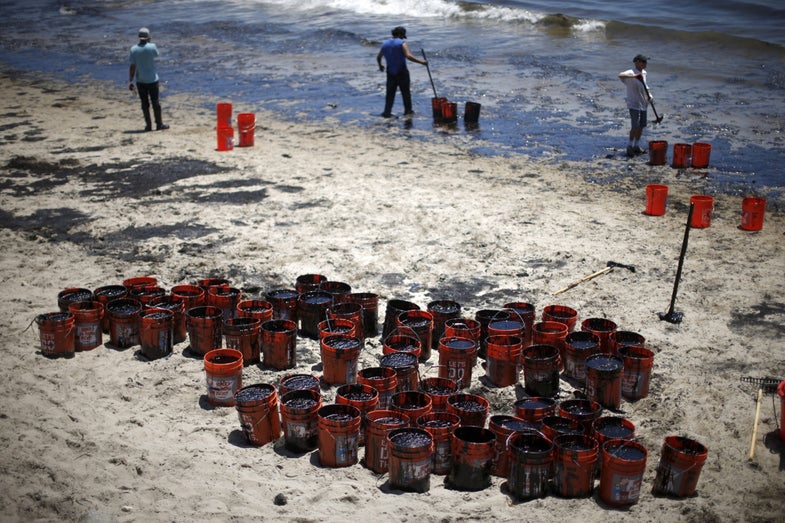How Santa Barbara Is Cleaning Up Its Oil Slick
With up to 105,000 gallons spilled, it's gonna take a lot of elbow grease

On May 19, a pipeline started leaking near the coast of Santa Barbara, spilling thousands of gallons of crude oil into the water. The cause of the leak remains uncertain, but the impact on the environment is unambiguous. Oil slicks on the surface stretched for roughly nine miles as California Governor Jerry Brown declared a State of Emergency. It was an event eerily reminiscent of another spill in Santa Barbara that occurred in 1969 and is widely credited with helping to jumpstart the environmental movement.
In this case, the flow of oil into the ocean was stopped quickly–within a few hours–but estimates of the amount of crude released into the environment ballooned from early reports of 21,000 gallons to worst-case scenario estimates of 105,000 gallons.
The U.S. Coast Guard is supervising the cleanup efforts. Though more advanced oil spill technology has been developed, cleanup crews for this spill still appear to be relying on traditional methods to contain the spill.
Right now, the main methods of getting oil out of the water and off of the beaches seem to be decidedly low-tech. Ships with booms (long, floating oil barriers) are corralling the oil slicks into place, keeping them from spreading. Then, skimmers (boats that remove oil from the water) enter the oil corral and literally skim the oil off the surface, removing it like you would take fat off the top of a pot of chicken stock. The company responsible for the pipeline, Plains All American, said that 6,000 gallons of oil had already been recovered this way.
Any oil that reaches the shore is met by a cadre of workers with shovels, who are scooping up contaminated soil, putting it in bags and buckets, and removing it from the scene.
As with all oil spills, even after the cleanup, the full impact of the spill may not be known for a long time. Though the Santa Barbara spill is much smaller than disasters like Deepwater Horizon (which spilled 210 million of gallons of oil in 2010) and the Exxon Valdez disaster (11 million gallons in 1989), those larger events show how the impact of an oil spill can linger for years, if not decades. Just this past Wednesday, a new National Oceanic and Atmospheric Administration report implicated the Deepwater Horizon disaster in the deaths of bottlenose dolphins along the Gulf coast.